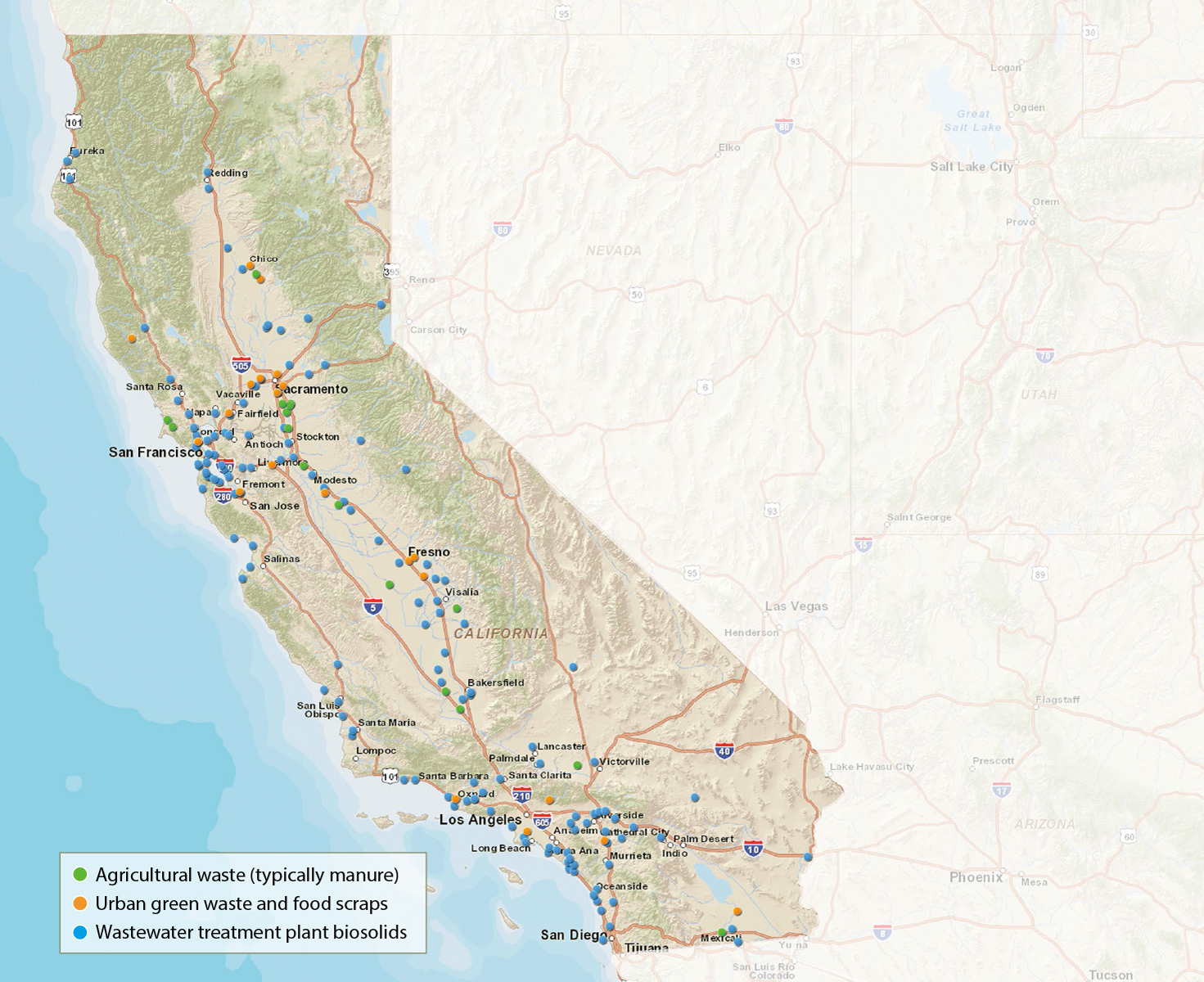All Issues
New UC ANR working group to address residual material from anaerobic digesters
Publication Information
California Agriculture 69(3):138-139. https://doi.org/10.3733/ca.v069n03p138b
Published online July 01, 2015
PDF | Citation | Permissions
NALT Keywords
Full text
Anaerobic digestion is an increasingly popular waste management strategy in California, with over 200 facilities operating and more under construction. Anaerobic digesters use microbes to break down organic wastes, including biosolids in treated wastewater, lawn trimmings, food wastes and manure. The digestion process produces methane-rich biogas, which can then be captured and used to generate electricity or power vehicles.
The residual solids and liquids left over after digestion is complete are known as digestates. As the anaerobic digestion sector has grown, so has the need for a coordinated strategy to manage these digestates.
Since they are rich in nutrients and organic matter, digestates are potentially valuable as soil amendments. But their composition can vary considerably and their performance has not been well documented. Better information about digestates and their potential uses could promote the development of markets for the materials, which would in turn help make digester facilities more financially sustainable by replacing digestate disposal costs with revenue opportunities.
To facilitate the beneficial use of digester residuals, Stephen Kaffka, a UC ANR Cooperative Extension (UCCE) agronomist at UC Davis, and David Crohn, a UCCE specialist at UC Riverside, are organizing a new working group of more than a dozen UC ANR researchers and private-sector collaborators.
The group seeks to characterize different organic amendments and fertilizer products created from digested materials as well as to analyze and compare their performance for a wide range of agronomic and horticultural uses. Results will be made public and the information used to support the development of in-state markets for fertilizer and soil amendment products for diverse uses, as well as to develop recommendations for their safe and effective use.
The newly forming group involves academic, industry and regulatory agency participants, and is currently applying for funding through the state Department of Food and Agriculture and other sources. Kaffka and Crohn said participation by any interested ANR researchers, campus-based scientists or anaerobic digestion industry participants would be welcome.
The nature of the anaerobic digestion process positions the technology well to contribute to reaching state goals for diverting organic wastes from landfills and reducing greenhouse gas emissions.
Anaerobic digestion's climate benefits are particularly striking when compared to alternative pathways for the disposal of organic matter. Decomposition in landfills or manure lagoons can release large amounts of methane to the atmosphere. Released methane is a greenhouse gas that is 34 times more potent than carbon dioxide. While many municipal landfills capture a portion of the methane generated by decomposing waste, much evades collection efforts and escapes. Some livestock operators already use anaerobic digesters or have systems to collect methane from manure lagoons, but many do not.
Compressed natural gas fuels produced from biogas are considered by California Air Resources Board staff to be among the lowest-carbon biofuels potentially available. They are by far the most climate-friendly fuels available today, with a life-cycle carbon footprint around one-tenth that of standard gasoline. Low-carbon fuels will be needed in increasing quantities to meet state targets for reducing greenhouse gas emissions from transportation.






